NASCA Students Return from TAFSIA Games (Jakarta)
In early October, an Australian delegation led by Aboriginal young people from Western Sydney returned from an international cultural...
Last week we returned from one of the most exciting and eye-opening adventures. NASCA staff accompanied twelve students from our Young Indigenous Pathways program and our South Sydney Academy to the world renowned Garma Festival. Our students were chosen because they had excelled over the last year in their behaviour, school attendance and have shown us their potential to become leaders in their communities.
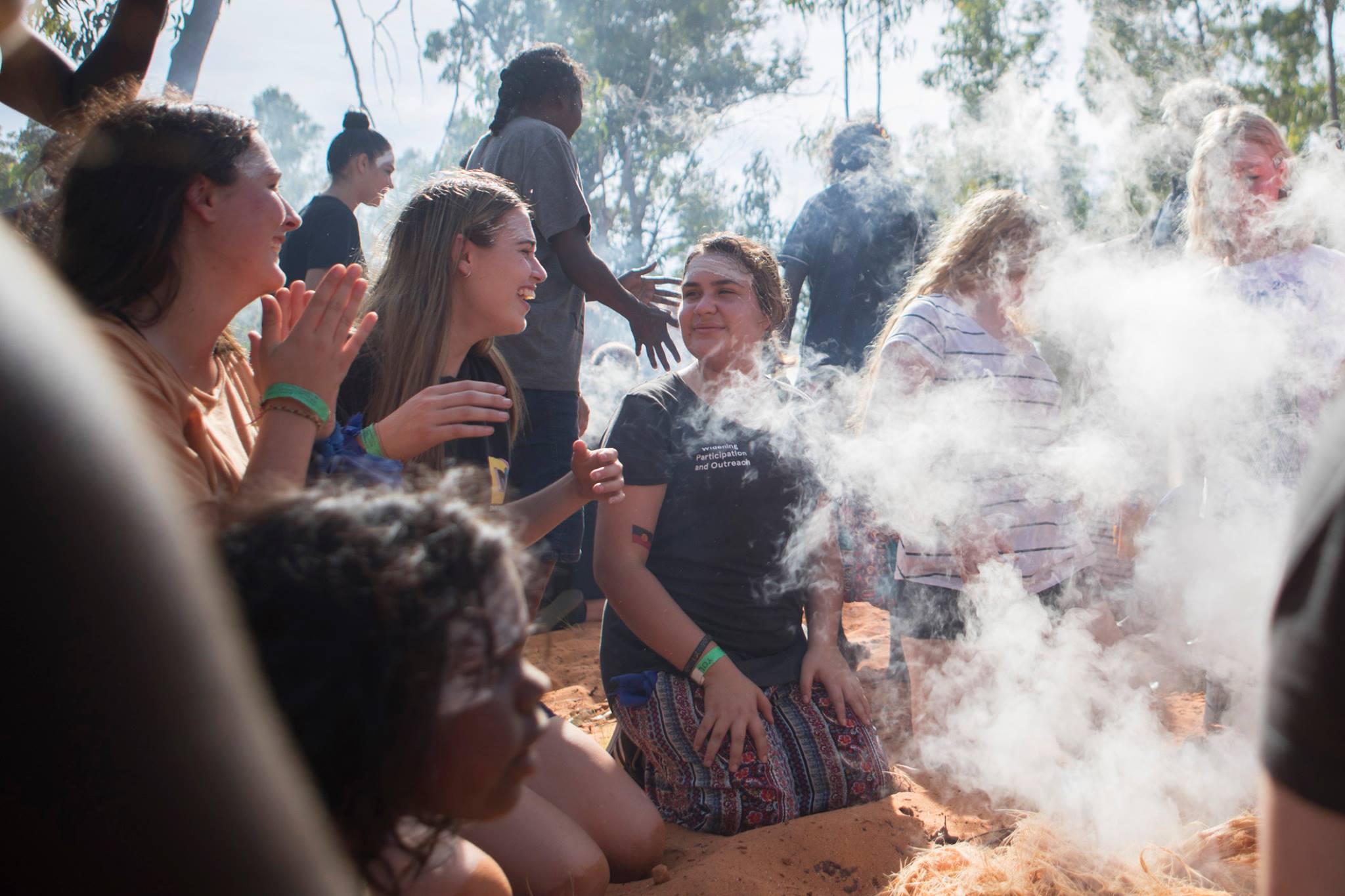
Smoking Ceremony, photo courtesy of Yothu Yindi Foundation.
| Garma Festival is one of the premier Indigenous festivals in the world and is held every year in East Arnhem NT. Garma provides a space for the preservation, maintenance and presentation of traditional knowledge systems and cultural traditions and practices, especially bunggul (traditional dance), Manikay (song), Miny’ tji (art) and ceremony. |
The trip started with anticipation, several of the young people had not been out of NSW let alone on a plane. This adventure turned even the coolest of teens into excited kids again. As we started our descent into Gove we saw the landscape change, huge swathes of red earth and tropical bush met with the sparkling blue Arafura Sea. By the time we got to the festival based near Nhulunbuy, night had fallen, and we were greeted warmly by the festival volunteers. Our tents had been set up and and the air was warm and smelt of campfire smoke.
On our first evening we sat down to eat at the long communal tables, sitting on the table next to us was Bill Shorten MP, across from him was comedian Steven Oliver. Garma is a place where people come together. Young and old, politicians, celebrities, local leaders and community members. The talk around us of was of Makarrata, an appetite for change but also excitement about what the festival had in store.
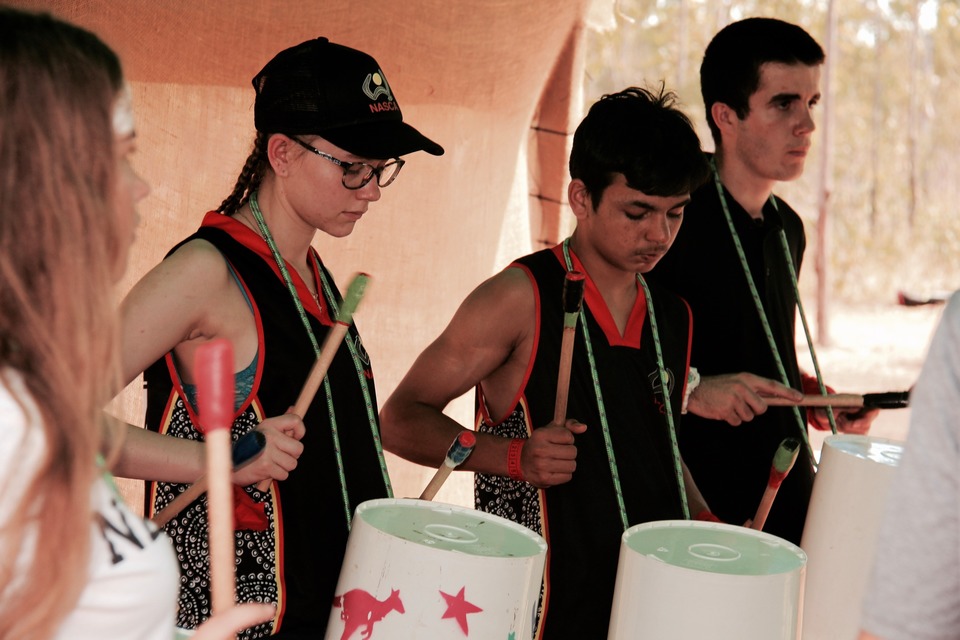
Students learn to drum.
The next three days were spent in a whirlwind of activity as our students participated in the Youth Forum. For our young people, connection to their Aboriginal culture and identity is vitally important. They come from a range of backgrounds and have families from Moree to Penrith and from Kempsey to Dubbo. Some of our young people have deep connections to their culture and others are on the start of their journey.
“ Garma helped me connect more with my culture, the dancing and music was really great to watch. I joined in a bit at the end.” – Carley
Aboriginal culture is rich and varied across Australia. Garma was an opportunity for our young people to participate in local Yolngu culture.
One of the most special experiences was the smoking ceremony. Local elders and community members took us a little way into the bush. They smeared our foreheads with cool white clay and we were ushered forward into a clearing. We knelt in a circle around a fire of Eucalyptus leaves, as the smoke billowed we leaned in and a sheet of fabric was put above our heads. The smoke was warm and smelt so rich, and the sound of Bimli (clap sticks) echoed around us. It was a truly healing and special moment for us all.
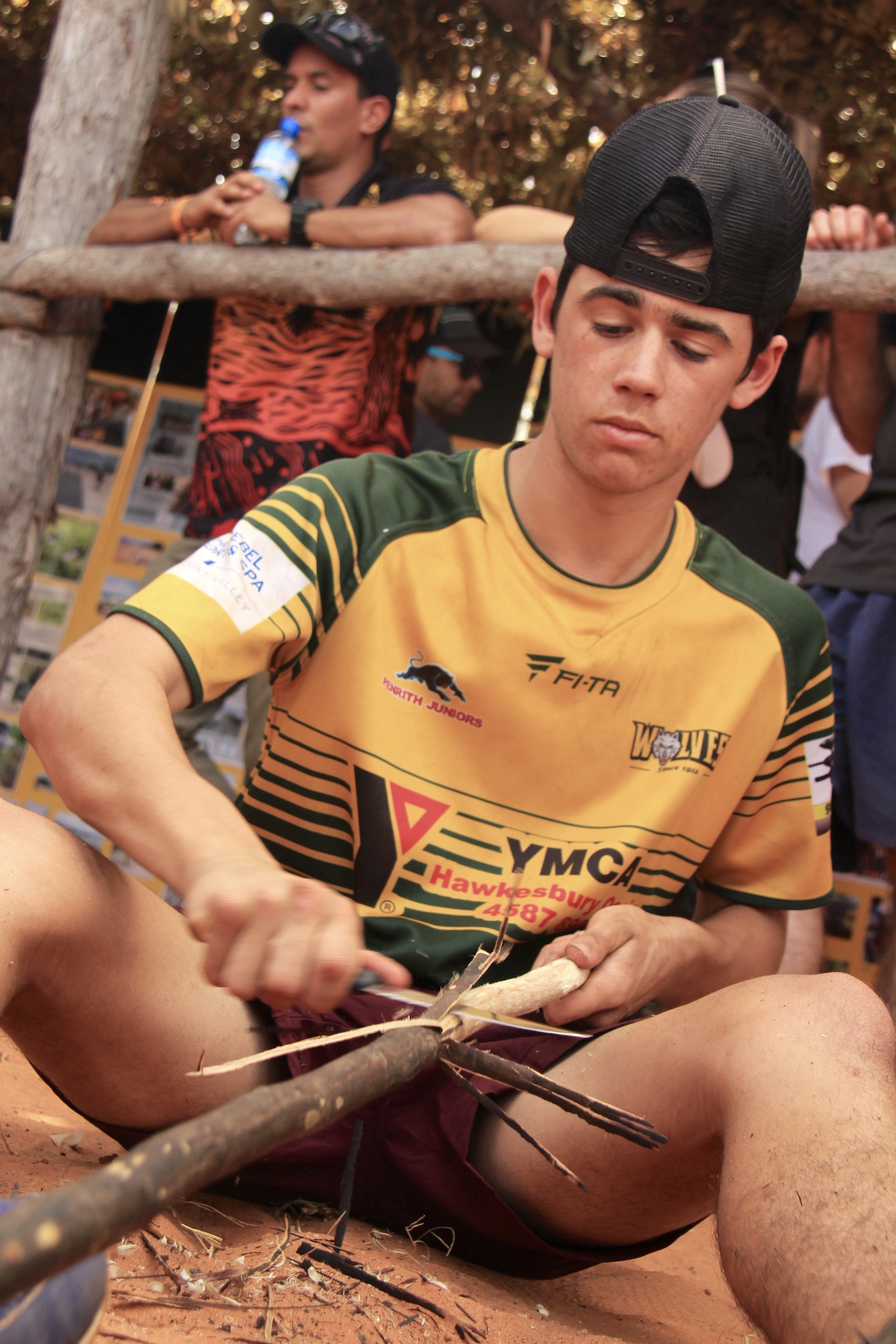
Students enjoyed spear making
One afternoon we got to spend some time with local elders. The girls sat down in the shade, crossed legged, with the Aunties and learnt to bead. They used the most beautiful tiny shells gathered from East Arnhem to make bracelets and necklaces. Each one was unique and a special memento of the trip. It was however the process of beading that was the most enjoyable. Sitting down together and spending time in the calm and quiet presence of the local Aunties; participating in an activity that women and girls have done for tens of thousands of years.
Whilst we were beading the boys went to learn how to make spears. The process was hard and time consuming. It involved fire and knives and a lot of diligence. Three of our young fellas worked together with local elders and made an impressively sharp spear (which later caused some deliberation when deciding how to transport it home to Sydney).
Our time in Garma was filled full of activities. In the Youth Forum there were sessions that varied from music making and production, through to storytelling and discussions on mental health and bullying. Two of our students were chosen to speak on a panel to discuss their thoughts on Garma, the Youth Forum and the issues facing Aboriginal and Torres Strait Islander young people.
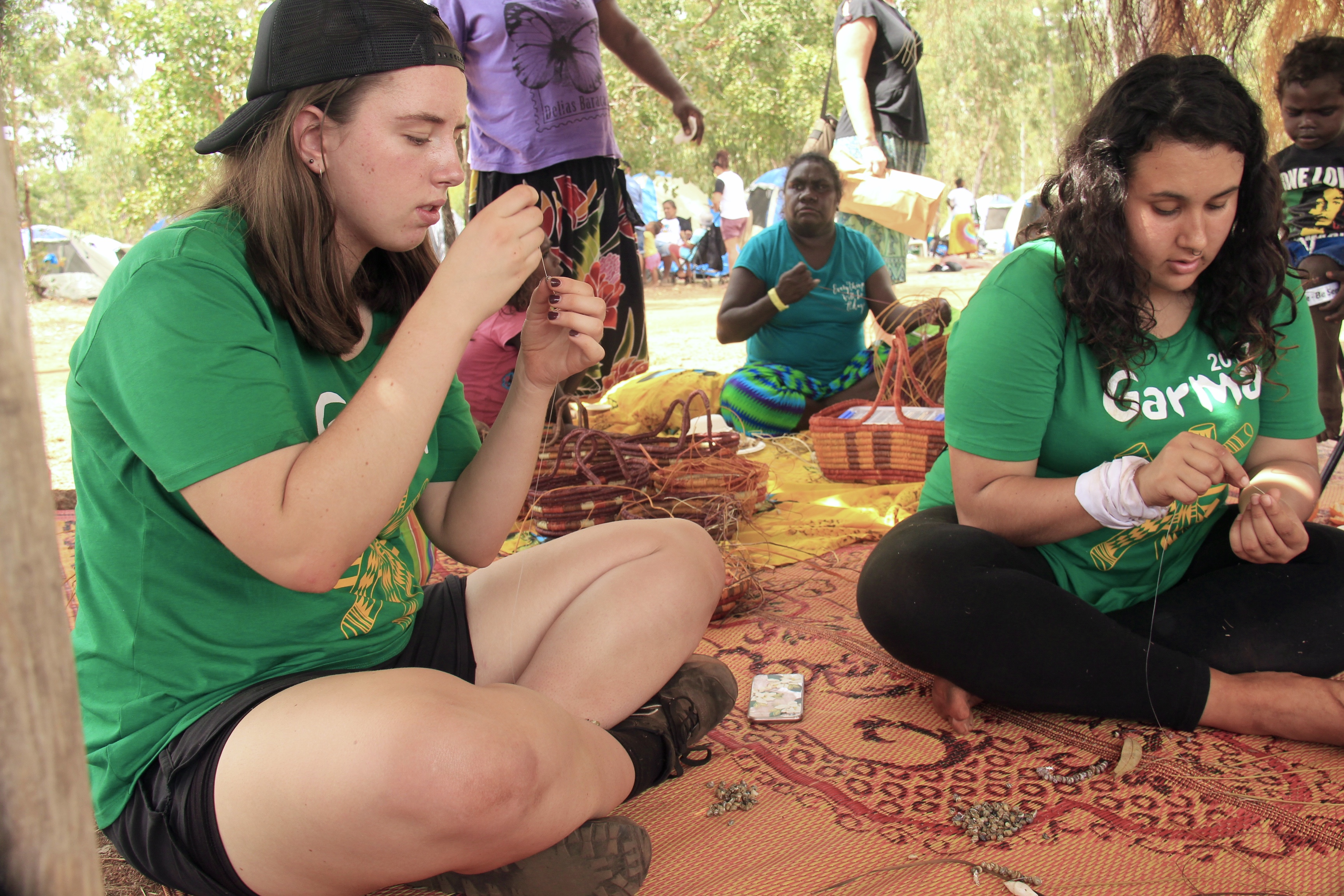
Learning to bead with local community members
Every evening as the sun started to dip below the horizon there was a bunggul dance ceremony, where the senior holders of the Yolngu song lines shared with us their stories of manikay (song) overlaid with the rhythm and of the clap stick.
However the largest learnings came from the friendships that were made. Our students made connections with friends from around Australia. Many of our kids played with young local children, learning their language and running around in fits of giggles. These are experiences that many of them will treasure for years to come.
“I loved making friends with the local young’uns and we nearly cried when we left.” – Shonnalea
Our trip was mostly funded by our partners Lendlease and the Greater Western Sydney Giants. We are so thankful for this support and excited about the knowledge and experience our young people were able to bring home to their schools and families.
Sometimes it’s easy to forget a trip away. But as we settle back into school and work, as we clean the red dust off our shoes and bags; our time at Garma (like the red dust) will stay with us forever.
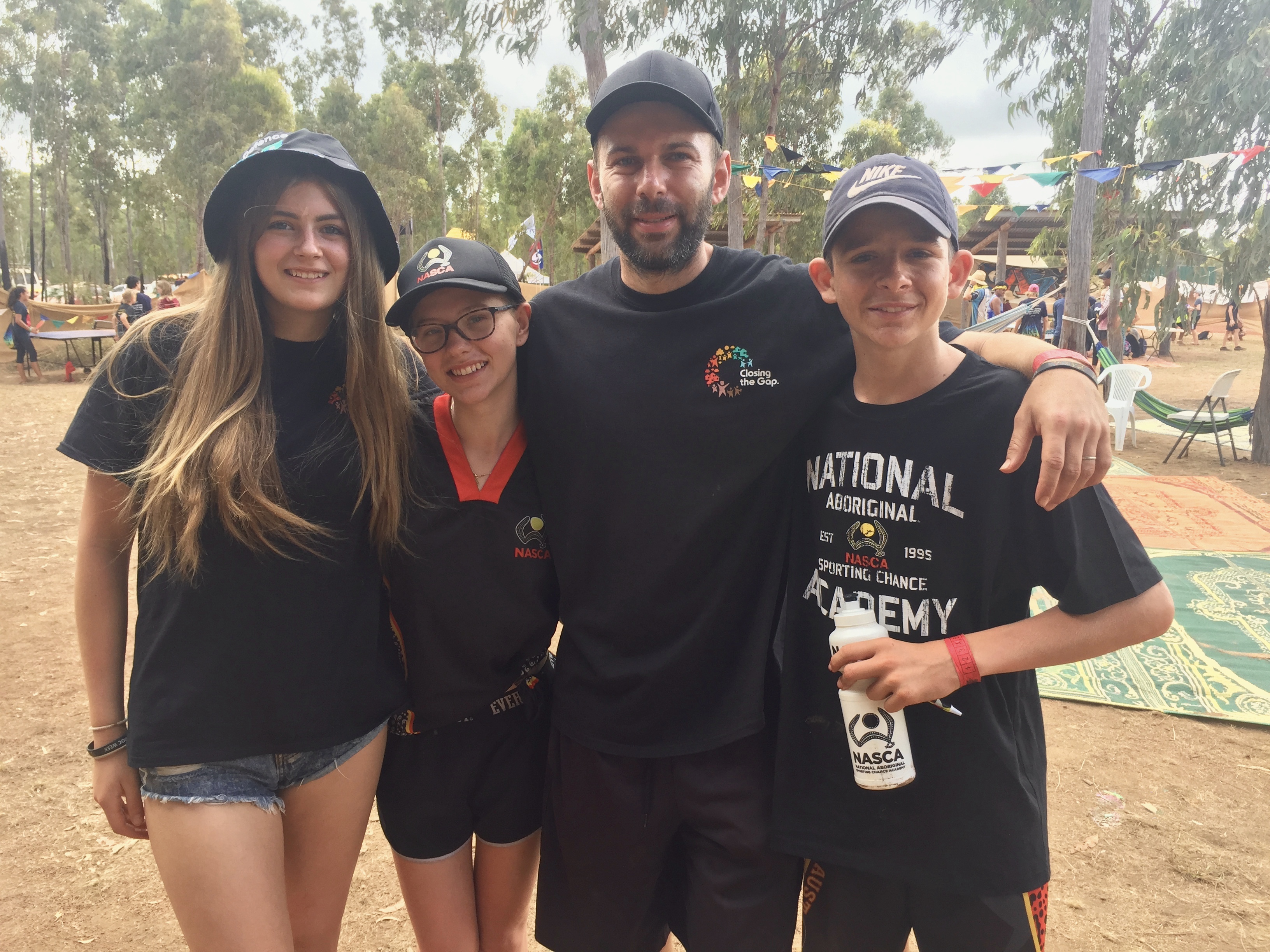
Making lifelong friends
Check out some more photos from our time at Garma.
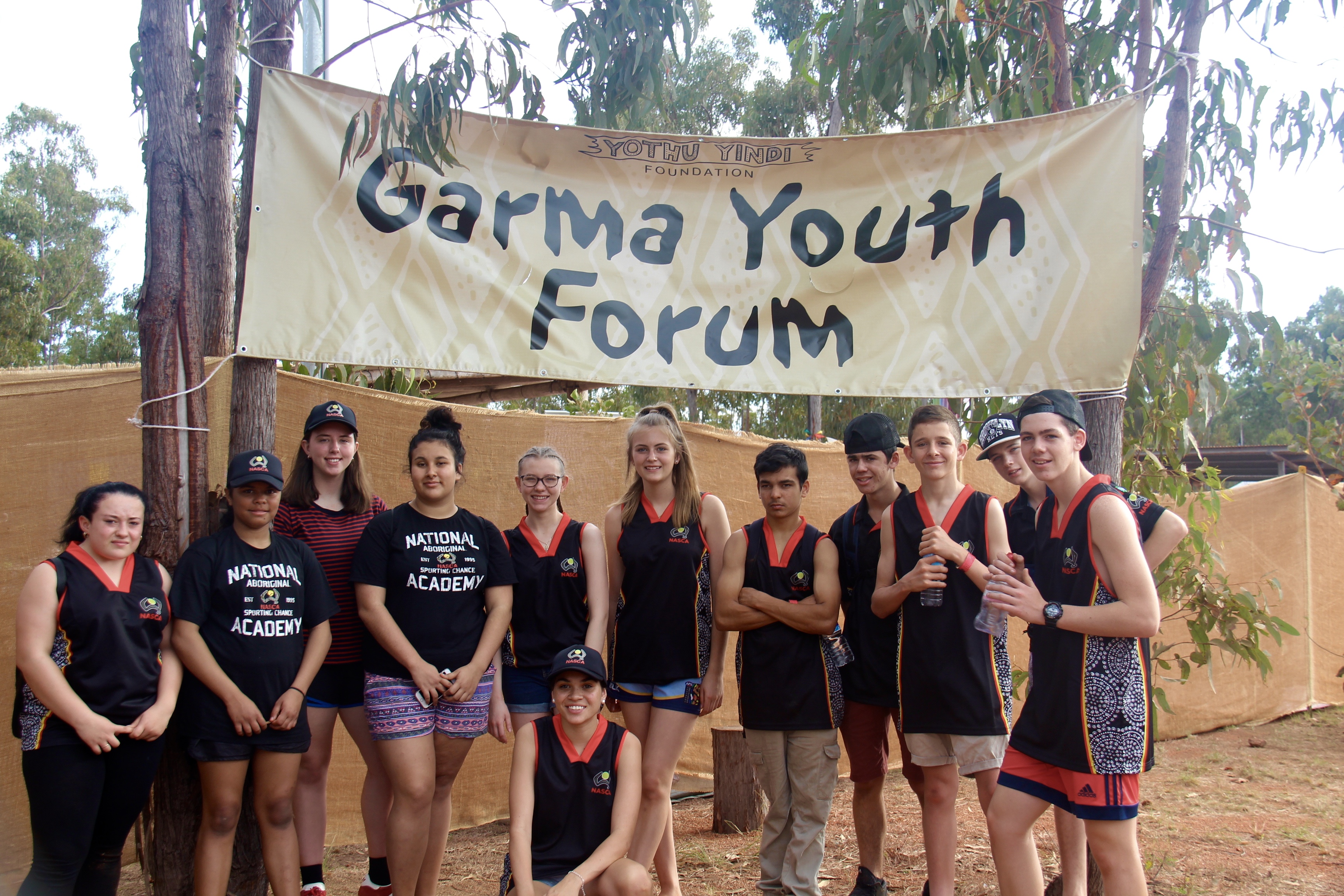
Ready for the Youth Forum
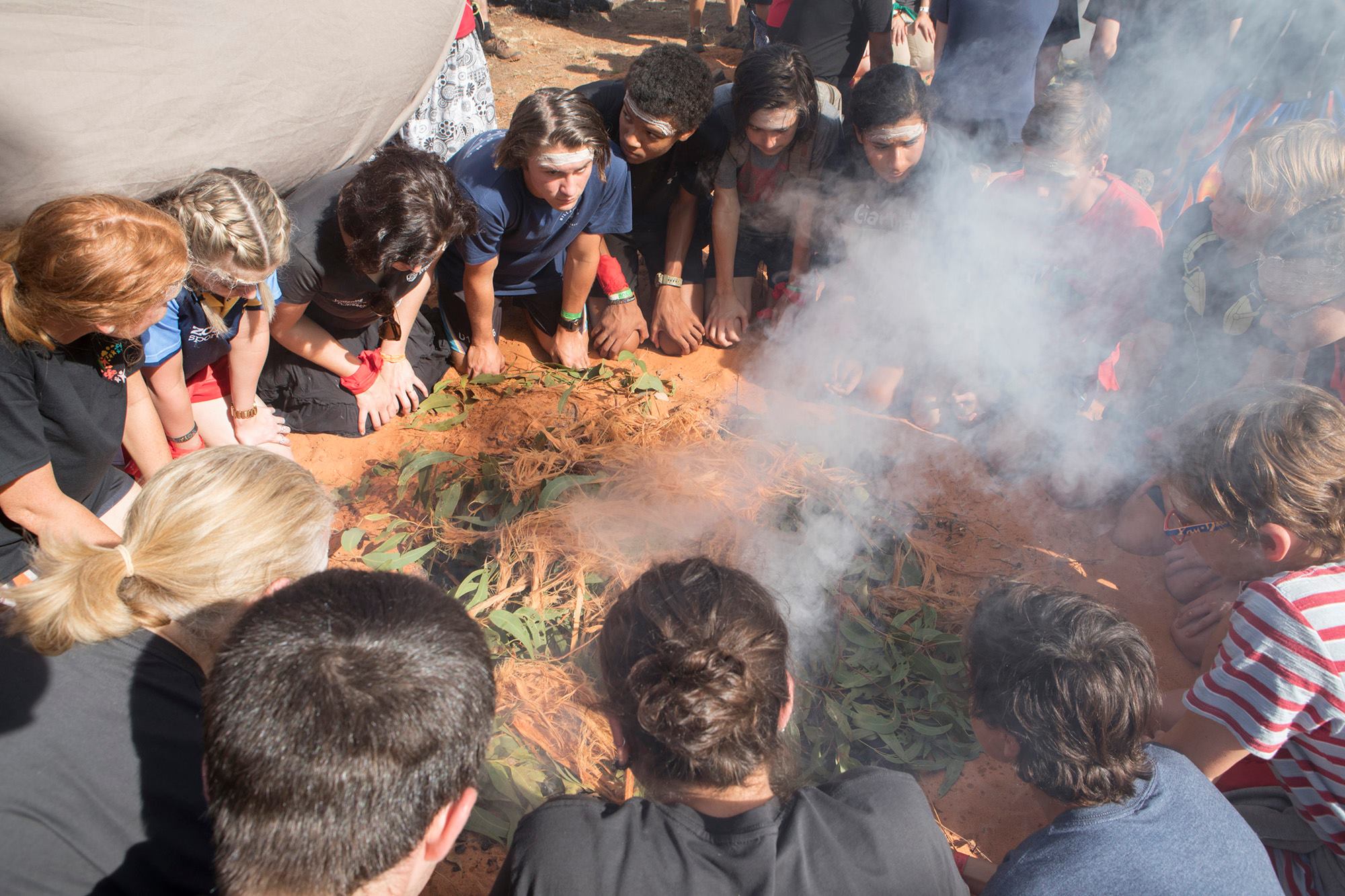
Taking in a Smoking Ceremony. Photo Courtesy of the Yothu Yindi Foundation.
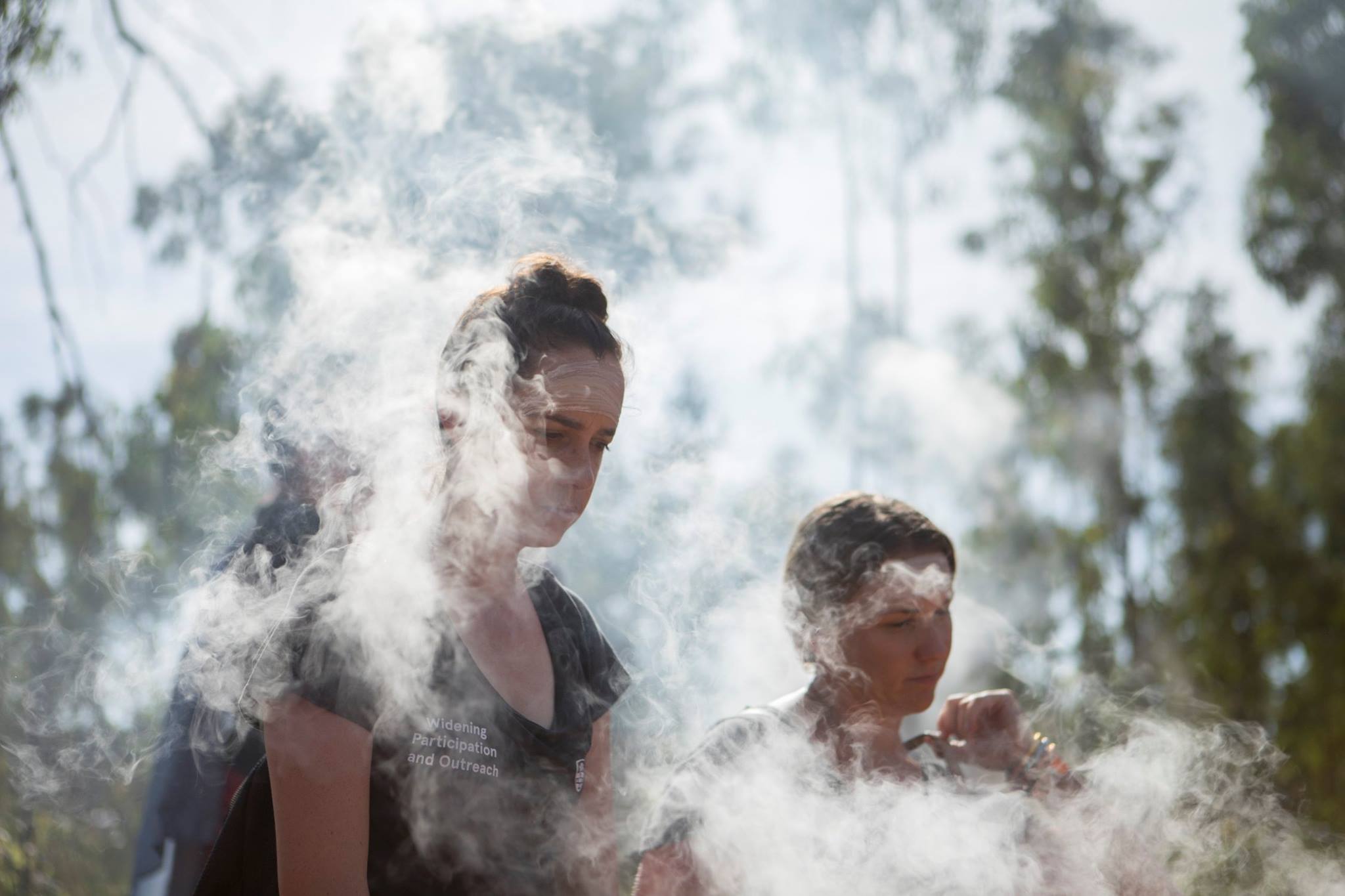
Taking in a Smoking Ceremony. Photo Courtesy of the Yothu Yindi Foundation.
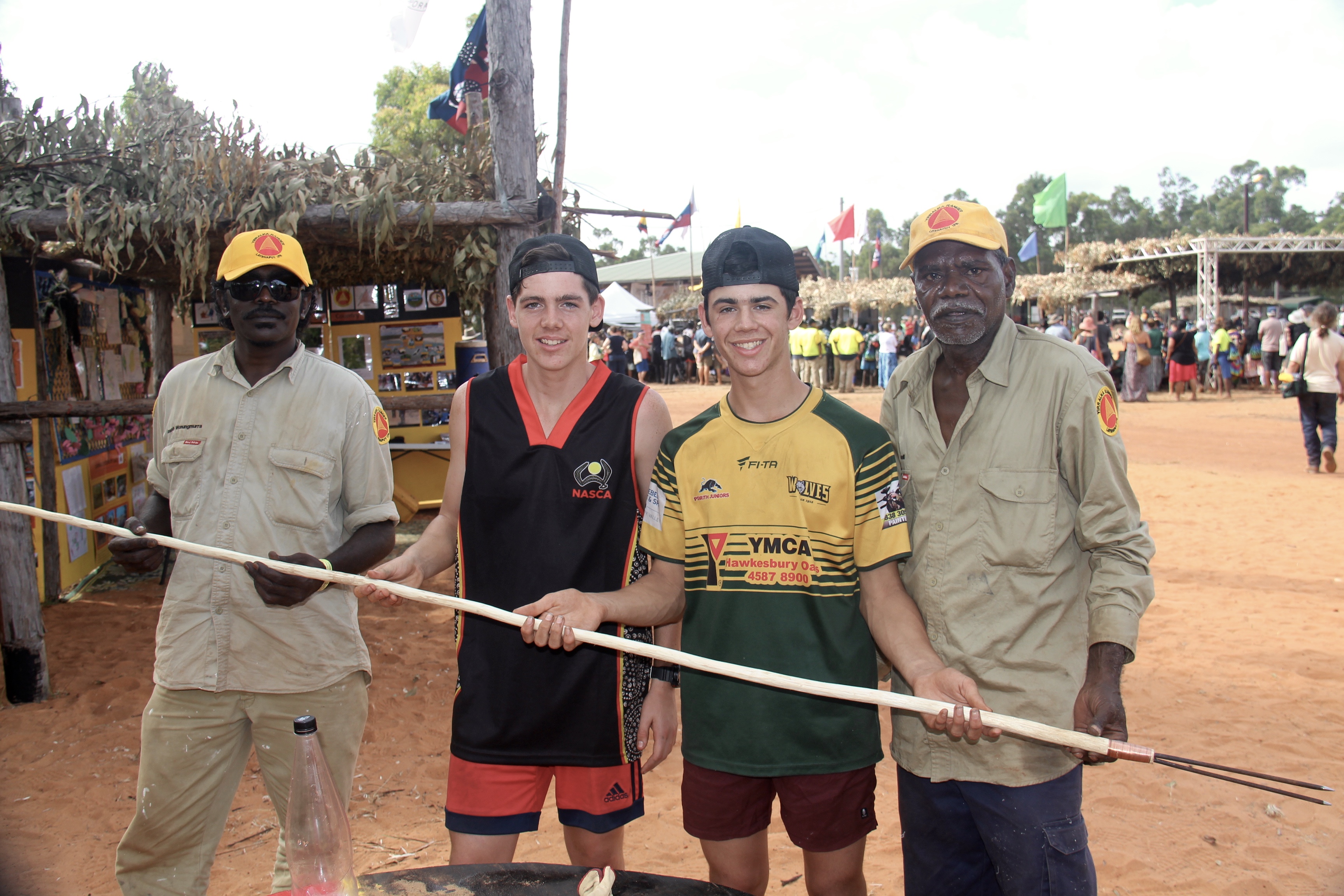
Spear made.
Help young Aboriginal and Torres Strait Islanders stay strong in their culture and identity.